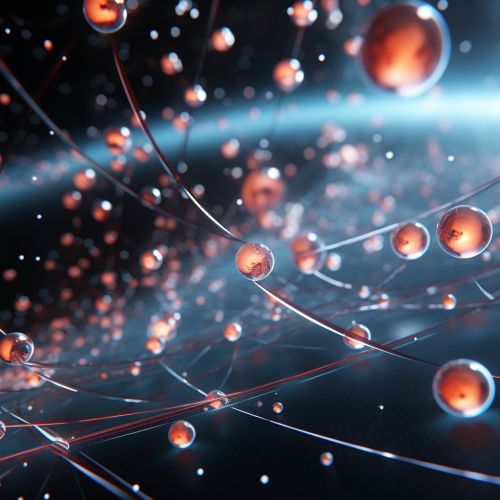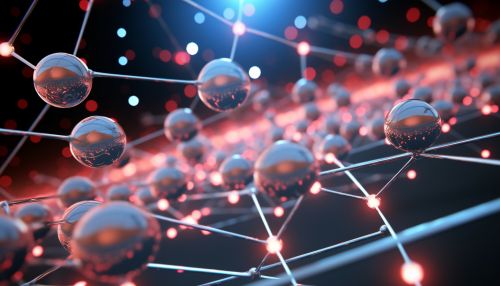Molecular Dynamics
Introduction
Molecular dynamics (MD) is a computer simulation technique used in physics, chemistry, and biology to analyze the physical movements of atoms and moleculesLearn more about Physics. The method is based on the numerical solution of Newton's equations of motion, for which each atom in a system is considered a point particle with a given mass and chargeLearn more about Newton's laws of motion.
Theoretical Background
The theoretical background of molecular dynamics is rooted in statistical mechanics and quantum mechanics. The system of interest is typically described by the classical Newtonian mechanics. The forces between the particles and their potential energies are calculated using interatomic potentials or molecular mechanics force fieldsLearn more about Quantum mechanics.


Methodology
In a molecular dynamics simulation, one typically initializes the system with a set of positions and velocities derived from a Maxwell-Boltzmann distribution at a given temperature. The system then evolves over time according to the laws of classical mechanics. The positions, velocities, and accelerations of the particles are updated at each time step using the forces computed from the potential energy functionLearn more about Maxwell-Boltzmann distribution.
Applications
Molecular dynamics simulations are used in various fields, including material science, biophysics, and computational chemistry. They can provide detailed information about the dynamic behavior of biological systems, such as protein folding, and can also be used to study the properties of materials at the atomic levelLearn more about Protein folding.
Limitations and Challenges
Despite its many applications, molecular dynamics has several limitations. The accuracy of the results depends on the quality of the force fields used, and the simulations are computationally intensive, requiring significant computational resources. Furthermore, the simulations can only capture events that occur within the nanosecond to microsecond timescale, which is a limitation for studying processes that occur over longer timescalesLearn more about Computational resources.
Future Directions
With the advent of more powerful computers and the development of new algorithms, the scope of molecular dynamics simulations is expected to expand. Future directions include the development of more accurate force fields, the use of machine learning algorithms to analyze simulation data, and the integration of quantum mechanics into molecular dynamics simulations to study electronic properties of systemsLearn more about Machine learning.
